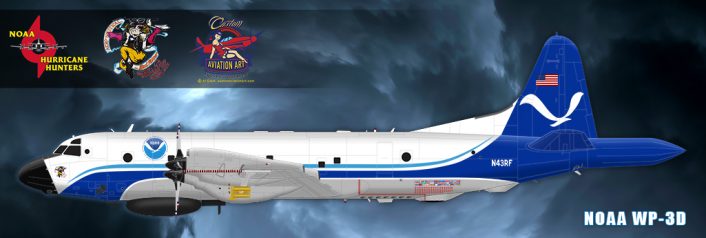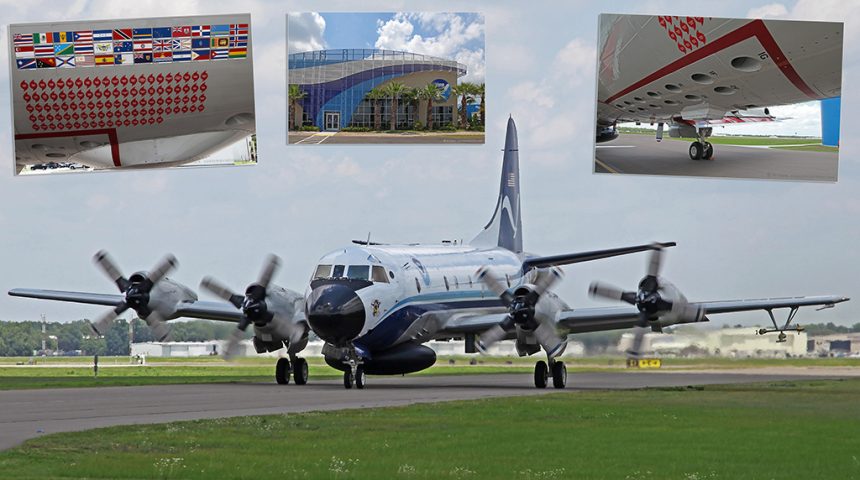We visited NOAA Air Operations Center in Lakeland, Florida to discuss the impending Atlantic Hurricane season.
On May 1, 2017, the United States’ National Oceanic and Atmospheric Administration (NOAA) moved its Aircraft Operations Center (AOC) to a brand new 156,043 square foot facility at the Lakeland Linder International Airport (LAL) in Lakeland, Florida. They moved from their 99,000 square foot facility at MacDill AFB (MCF) in Tampa, Florida. The move to their new home provided NOAA with mission specific facilities and a 37% increase in useable operations area.
The NOAA AOC move was necessary because MacDill AFB, primarily a KC-135R tanker base, needed additional room for an incoming KC-135R squadron, the 50th Air Refueling Squadron (the Big 5-0 as MacDill’s Deputy Chief Pub Affairs Terry Montrose told me they were referred to), a squadron with roots dating back to WW II. The Big 5-0 took possession of NOAA’s former space on October 2, 2017, and added 250+ personnel to the roster at MacDill AFB.
In review, NOAA’s move from MacDill AFB to the Lakeland Linder International airport turned out to be a huge win-win for both NOAA and MacDill AFB.
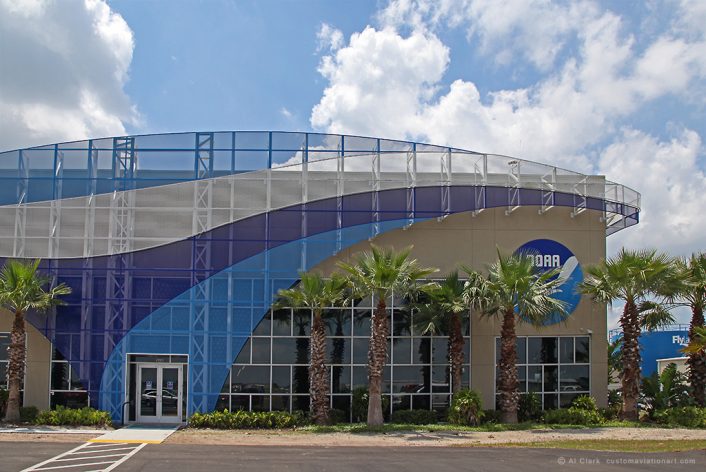
Fast-forward to May, 2021, about a month before the official start of the 2021 hurricane season.
That’s a fast-forward that jumped a significant global event: COVID-19. In speaking with some of the team members at NOAA during my visit there, I was privileged to be the recipient of much information, and many resources for this article. To cover the effects of COVID-19 on NOAA’s AOC mission would be a massive article unto itself. What they did convey to me without hesitation, and with zero uncertainty, was that NOAA and its super dedicated and ultra-capable people remained steadfast to their multiple missions globally, hurricane research (hunting).
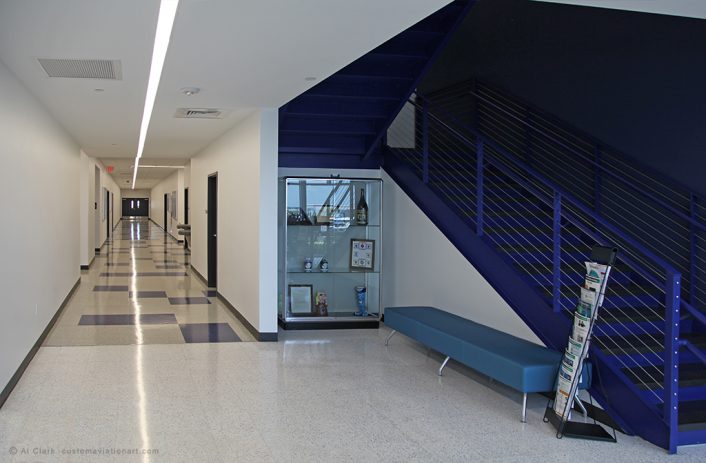
During the 2020 season, NOAA’s Aircraft Operations Center supported this important data collection with 31 flights and 219.2 flight hours on the NOAA Gulfstream IV-SP and 55 flights and 459 flight hours on NOAA’s two WP-3D Orion Hurricane Hunters. Aircrews on the NOAA Hurricane Hunters released 1,772 dropsondes and 28 airborne expendable bathythermographs (AXBTs) feeding vital data on atmospheric and oceanic conditions to forecast models during these flights. NOAA Corps pilots and navigators, as well as NOAA engineers, technicians, and meteorologists crossed through the eye of a hurricane over 102 times aboard a WP-3D Orion, during flights through Hurricanes Hanna, Isaias, Laura, Paulette, Sally, Teddy, Delta, Zeta, and Eta.
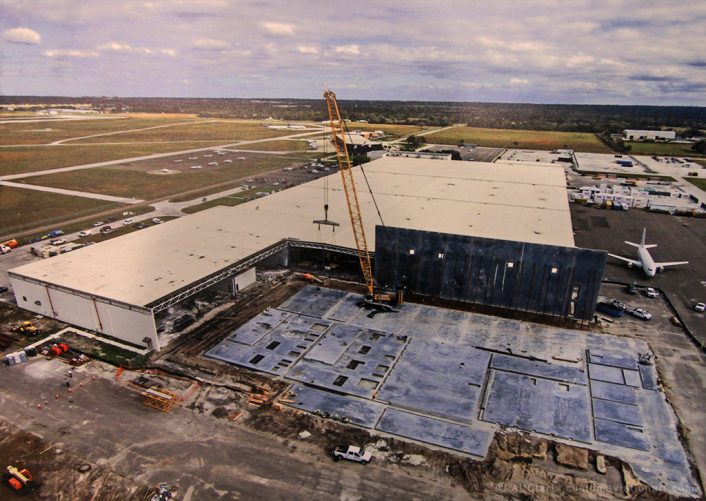
NOAA currently operates four distinct airframes (excluding unmanned): two Beechcraft King Air 350CERs (registration N67RF and N68RF; callsigns NOAA67 & NOAA68, respectively). NOAA’s two King Airs are versatile, twin-engine, extended-range turboprop aircraft. They primarily support coastal mapping, snow and soil moisture surveys, and emergency response missions.
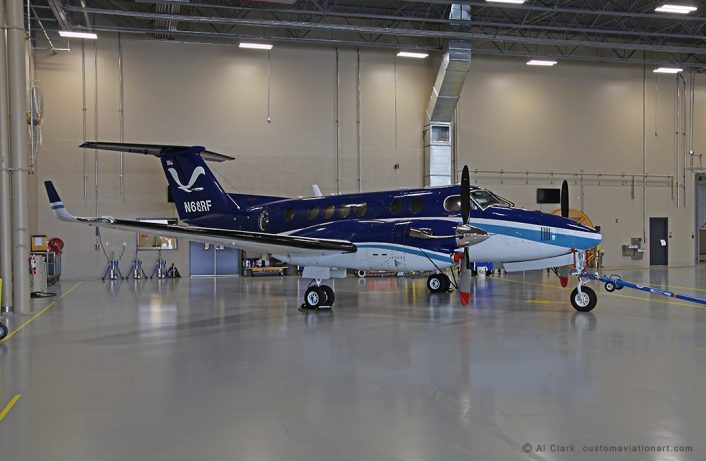
Four De Havilland DHC-6-300 Twin Otters (N46RF, N48RF, N56RF & N57RF, with callsigns NOAA46, NOAA48, NOAA56 and NOAA57, respectively): the Twin Otters are among NOAA’s most versatile aircraft. Known for their reliability, short takeoff and landing capabilities, payload capacity and excellent external visibility, they are a perfect asset to support NOAA science in even the harshest environments. According to NOAA’s Public Affairs Specialist Jonathan Shannon, the Twin Otters engage in extensive snow measurement research in the northern latitudes. Both the Twin Otter and King Airs fly Snow Survey and Soil Moisture research programs (very interesting breakdown by NOAA here) They also engage in vital conservation efforts aimed at monitoring and protecting the very endangered North Atlantic right whale.

One Gulfstream IV-SP (G-IV) “Gonzo” (registration N49RF/NOAA49): NOAA’s Gulfstream is a high-tech, high-flying, and high-speed platform used for hurricane forecasting and research. The G-IV flies around and over developing tropical cyclones to create a detailed picture of the surrounding upper atmosphere. NOAA is planning on upgrading to the Gulfstream G550 in 2023.
Two Lockheed WP-3D Orions “Kermit” & “Miss Piggy” (N42RF and N43RF, radio callsigns NOAA42 and NOAA43, respectively): according to NOAA, their two Lockheed WP-3D Orion “Hurricane Hunters” play a key role in collecting data vital to tropical cyclone research and forecasting.
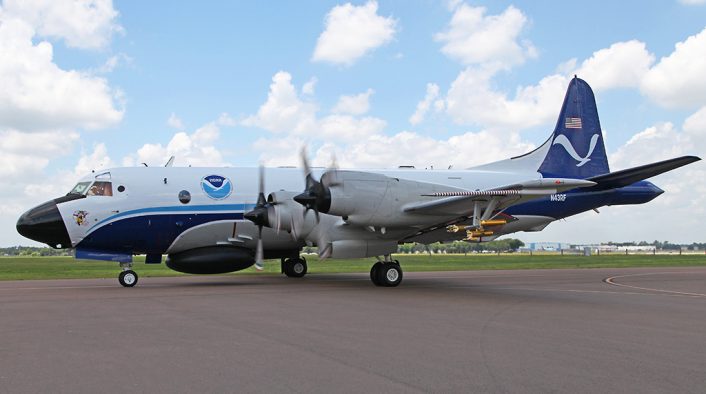
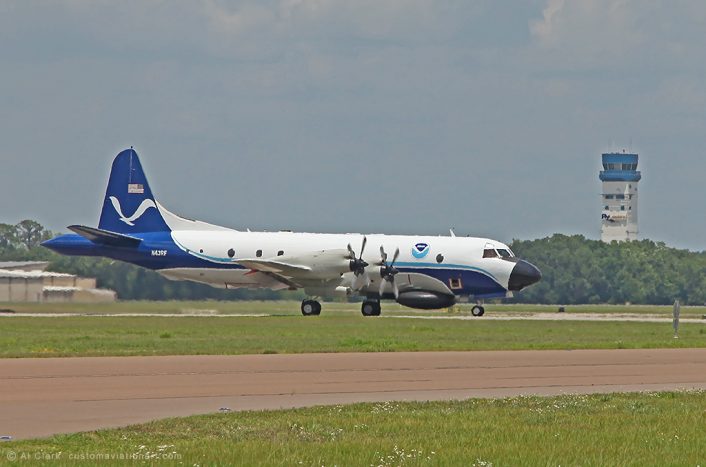
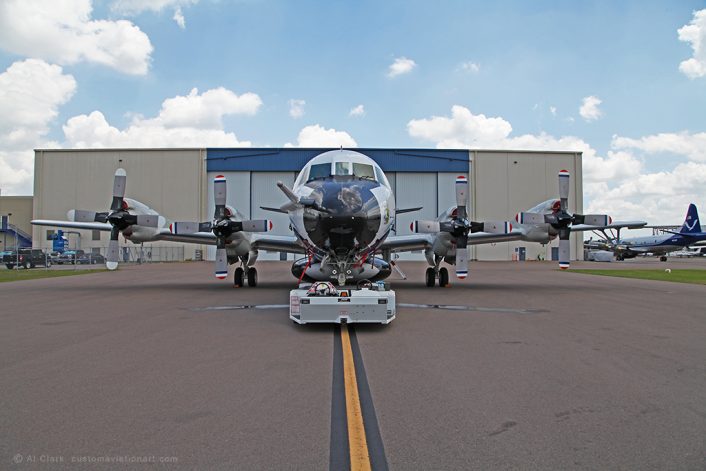
These highly-capable four-engine turboprops also support a wide variety of atmospheric and air chemistry missions. The two NOAA WP-3Ds were specifically made, brand- new, by Lockheed for NOAA and first flew in 1975. The aircraft were introduced into service in 1976.

These aircraft are not re-missioned ex-military aircraft. The scientists aboard the NOAA WP-3D Hurricane Hunters utilize a combination of weather radar, spectrographic lasers, disposable Dropsondes, and unmanned aerial vehicles (UAVs) to measure and track their targeted storms.
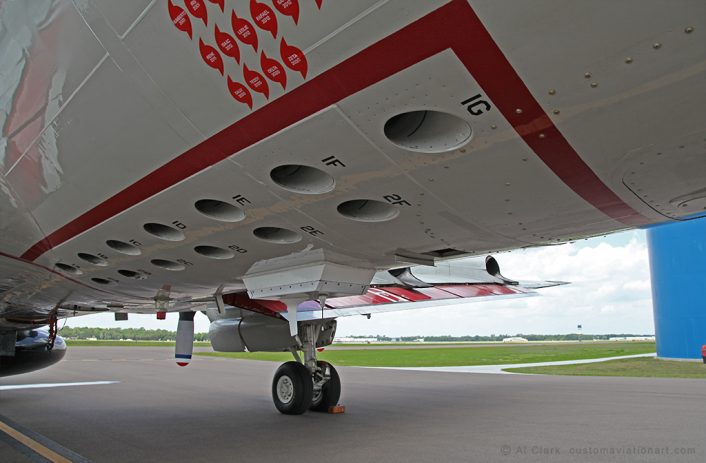
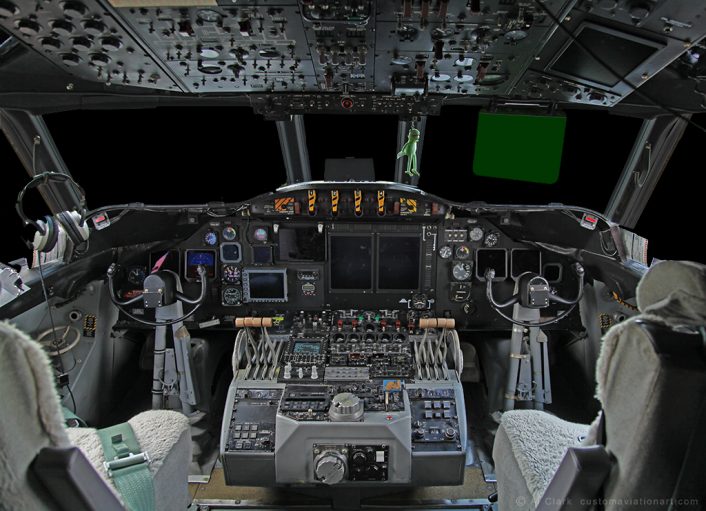
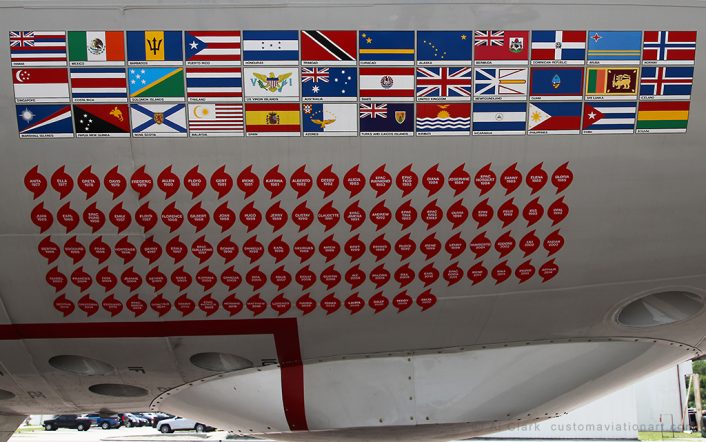
Jonathan Shannon gave us a personal tour of NOAA’s AOC facility in Lakeland, FL.
If I were going to use one word to describe the facility, it would be “immaculate”. The entire base, from the offices, to the aircraft hangars, to the machine shops look like they were maintained to a standard that I’ve not witnessed before. This same level of attention to organization and, literally, spotlessness was obviously transposed to NOAA’s fleet of aircraft. Knowing that an organization with such a critical mission is maintained in such a state of positive readiness is very reassuring to somebody like myself who lives right on Florida’s coast and is often in, or very near, the bullseye of a named Atlantic storm.
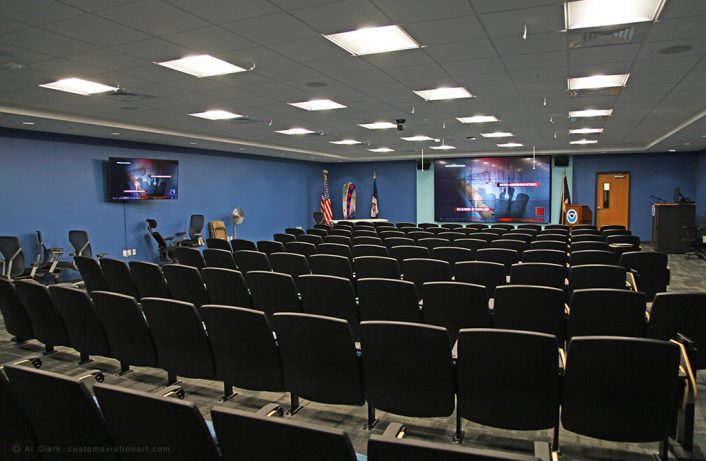
Our visit to NOAA’s AOC facility culminated with a one-on-one meeting with base commander, Cmdr. Christian Sloan. Cmdr. Sloan assumed command of NOAA’s AOC on Dec. 2, 2019. For a guy with such a big job, Cmdr. Sloan came across as very approachable, very informed, and overall a really nice guy. Not to sound overly colloquial, but considering this tightly-run NOAA AOC ship, a ship run by Cmdr. Sloan, I think I was expecting somebody a little meaner. In fact, everybody we encountered at the facility came across as truly exceptional, friendly, and just happy to be there. It reminded me a little of the time I spent working with the U.S. Navy’s flight demonstration team The Blue Angels. Everybody was sharp, they did their job very well, and they were all, genuinely, happy to be there. When you have a team like that, and a team like that at NOAA’s AOC facility, that kind of success starts at the top. Like them, we were happy to be there and honored that the people at NOAA took their valuable time to spend time talking to us – and, just a reminder, the 2021 Atlantic hurricane season is just days away.
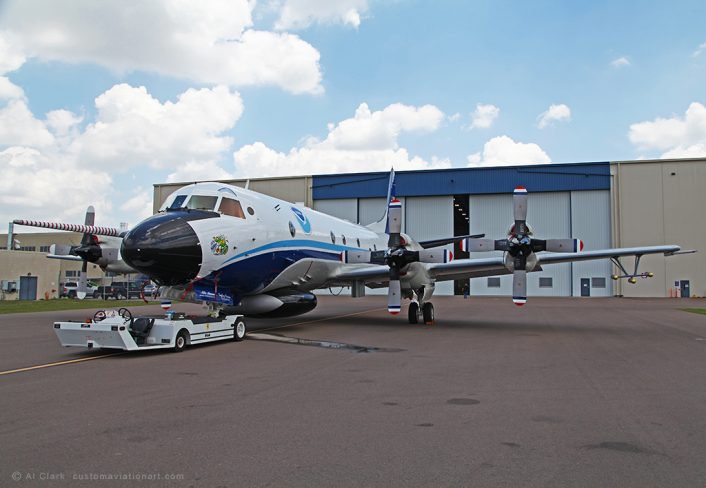
NOAA does have “home grown” programs where new pilots interested in becoming part of this exemplary service can start from the ground up. For those interested, you can visit the NOAA CORP webpage here.
This is the first of a series of NOAA related articles. We gathered extensive information that needs to be shared, including a story about the time a WP-3D lost an engine in the middle of a Category- 5 hurricane and went as low as 100’ ASL, a story conveyed to us by Paul T. Flaherty, Chief of the Science Branch at NOAA’s Aircraft Operations Center and Jack Parrish, NOAA Flight Meteorologist, Project Manager (40+ years experience).
